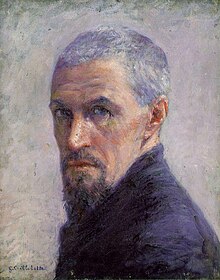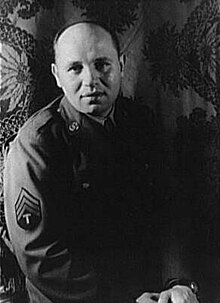Hello Guys ,
Today we're going to Learn about the Great and Famous Mary Cassatt I hope it would be interesting and entertaining your day !
Thank you and there is lot of stuff coming soon so stay tuned to Toonstar6 and if you want any videos about art you can visit ou YouTube page!Check this out : https://www.youtube.com/user/toonstar6
Mary Stevenson Cassatt (/kəˈsæt/; May 22, 1844 – June 14, 1926) was an American painter and printmaker. She lived much of her adult life in France, where she first befriended Edgar Degas and later exhibited among the Impressionists. Cassatt often created images of the social and private lives of women, with particular emphasis on the intimate bonds between mothers and children.
She was described by Gustave Geffroy in 1894 as one of "les trois grandes dames" of Impressionism alongside Marie Bracquemond and Berthe Morisot.
Mary Cassatt depicted the "New Woman" of the 19th century from the woman's perspective. As a successful, highly trained woman artist who never married, Cassatt—like Ellen Day Hale, Elizabeth Coffin, Elizabeth Nourse and Cecilia Beaux—personified the "New Woman". She "initiated the profound beginnings in recreating the image of the 'new' women", drawn from the influence of her intelligent and active mother, Katherine Cassatt, who believed in educating women to be knowledgeable and socially active. She is depicted in Reading 'Le Figaro' (1878).
Cassatt and Degas had a long period of collaboration. The two had studios close together, Cassatt at 19, rue Laval, Degas at 4, rue Frochot, less than a five minute stroll apart, and Degas got into the habit of looking in at Cassat's studio and offering her advice and helping her get models.
They had much in common: they shared similar tastes in art and literature, came from affluent backgrounds, had studied painting in Italy, and both were independent, never marrying. The degree of intimacy between them cannot be assessed now, as no letters survive, but it is unlikely they were in a relationship given their conservative social backgrounds and strong moral principles. Several of Vincent van Gogh's letters attest Degas' sexual continence.Degas introduced Cassatt to pastel and engraving, both of which Cassatt quickly mastered, while for her part Cassatt was instrumental in helping Degas sell his paintings and promoting his reputation in America.
Both regarded themselves as figure painters, and the art historian George Shacklelford suggests they were influenced by the art critic Louis Edmond Duranty's appeal in his pamphlet The New Painting for a revitalization in figure painting: "Let us take leave of the stylized human body, which is treated like a vase. What we need is the characteristic modern person in his clothes, in the midst of his social surroundings, at home or out in the street."
Cassatt's popular reputation is based on an extensive series of rigorously drawn, tenderly observed, yet largely unsentimental paintings and prints on the theme of the mother and child. The earliest dated work on this subject is the drypoint Gardner Held by His Mother (an impression inscribed "Jan/88" is in the New York Public Library), although she had painted a few earlier works on the theme. Some of these works depict her own relatives, friends, or clients, although in her later years she generally used professional models in compositions that are often reminiscent of Italian Renaissance depictions of the Madonna and Child. After 1900, she concentrated almost exclusively on mother-and-child subjects.
A trip to Egypt in 1910 impressed Cassatt with the beauty of its ancient art, but was followed by a crisis of creativity; not only had the trip exhausted her, but she declared herself "crushed by the strength of this Art", saying, "I fought against it but it conquered, it is surely the greatest Art the past has left us ... how are my feeble hands to ever paint the effect on me." Diagnosed with diabetes, rheumatism, neuralgia, and cataracts in 1911, she did not slow down, but after 1914 she was forced to stop painting as she became almost blind.
A feminist from an early age, albeit in a nuanced and private way and objecting to being stereotyped as a "woman arist", she supported women's suffrage, and in 1915 showed eighteen works in an exhibition supporting the movement organised by Louisine Havemeyer, a committed and active feminist. The exhibition brought her into conflict with her sister-in-law Eugenie Carter Cassatt, who was anti-suffrage and who boycotted the show along with Philadelphia society in general. Cassatt responded by selling off her work that was otherwise destined for her heirs. In particular The Boating Party, thought to have been inspired by the birth of Eugenie's daughter Ellen Mary, was bought by the National Gallery, Washington DC.
Cassatt died on June 14, 1926 at Château de Beaufresne, near Paris, and was buried in the family vault at Le Mesnil-Théribus, France.
Source :WikiPedia
Today we're going to Learn about the Great and Famous Mary Cassatt I hope it would be interesting and entertaining your day !
Thank you and there is lot of stuff coming soon so stay tuned to Toonstar6 and if you want any videos about art you can visit ou YouTube page!Check this out : https://www.youtube.com/user/toonstar6
Mary Stevenson Cassatt (/kəˈsæt/; May 22, 1844 – June 14, 1926) was an American painter and printmaker. She lived much of her adult life in France, where she first befriended Edgar Degas and later exhibited among the Impressionists. Cassatt often created images of the social and private lives of women, with particular emphasis on the intimate bonds between mothers and children.
She was described by Gustave Geffroy in 1894 as one of "les trois grandes dames" of Impressionism alongside Marie Bracquemond and Berthe Morisot.
Mary Cassatt depicted the "New Woman" of the 19th century from the woman's perspective. As a successful, highly trained woman artist who never married, Cassatt—like Ellen Day Hale, Elizabeth Coffin, Elizabeth Nourse and Cecilia Beaux—personified the "New Woman". She "initiated the profound beginnings in recreating the image of the 'new' women", drawn from the influence of her intelligent and active mother, Katherine Cassatt, who believed in educating women to be knowledgeable and socially active. She is depicted in Reading 'Le Figaro' (1878).
Cassatt and Degas had a long period of collaboration. The two had studios close together, Cassatt at 19, rue Laval, Degas at 4, rue Frochot, less than a five minute stroll apart, and Degas got into the habit of looking in at Cassat's studio and offering her advice and helping her get models.
They had much in common: they shared similar tastes in art and literature, came from affluent backgrounds, had studied painting in Italy, and both were independent, never marrying. The degree of intimacy between them cannot be assessed now, as no letters survive, but it is unlikely they were in a relationship given their conservative social backgrounds and strong moral principles. Several of Vincent van Gogh's letters attest Degas' sexual continence.Degas introduced Cassatt to pastel and engraving, both of which Cassatt quickly mastered, while for her part Cassatt was instrumental in helping Degas sell his paintings and promoting his reputation in America.
Both regarded themselves as figure painters, and the art historian George Shacklelford suggests they were influenced by the art critic Louis Edmond Duranty's appeal in his pamphlet The New Painting for a revitalization in figure painting: "Let us take leave of the stylized human body, which is treated like a vase. What we need is the characteristic modern person in his clothes, in the midst of his social surroundings, at home or out in the street."
Cassatt's popular reputation is based on an extensive series of rigorously drawn, tenderly observed, yet largely unsentimental paintings and prints on the theme of the mother and child. The earliest dated work on this subject is the drypoint Gardner Held by His Mother (an impression inscribed "Jan/88" is in the New York Public Library), although she had painted a few earlier works on the theme. Some of these works depict her own relatives, friends, or clients, although in her later years she generally used professional models in compositions that are often reminiscent of Italian Renaissance depictions of the Madonna and Child. After 1900, she concentrated almost exclusively on mother-and-child subjects.
A trip to Egypt in 1910 impressed Cassatt with the beauty of its ancient art, but was followed by a crisis of creativity; not only had the trip exhausted her, but she declared herself "crushed by the strength of this Art", saying, "I fought against it but it conquered, it is surely the greatest Art the past has left us ... how are my feeble hands to ever paint the effect on me." Diagnosed with diabetes, rheumatism, neuralgia, and cataracts in 1911, she did not slow down, but after 1914 she was forced to stop painting as she became almost blind.
A feminist from an early age, albeit in a nuanced and private way and objecting to being stereotyped as a "woman arist", she supported women's suffrage, and in 1915 showed eighteen works in an exhibition supporting the movement organised by Louisine Havemeyer, a committed and active feminist. The exhibition brought her into conflict with her sister-in-law Eugenie Carter Cassatt, who was anti-suffrage and who boycotted the show along with Philadelphia society in general. Cassatt responded by selling off her work that was otherwise destined for her heirs. In particular The Boating Party, thought to have been inspired by the birth of Eugenie's daughter Ellen Mary, was bought by the National Gallery, Washington DC.
Cassatt died on June 14, 1926 at Château de Beaufresne, near Paris, and was buried in the family vault at Le Mesnil-Théribus, France.
Source :WikiPedia



.jpg/220px-Walter_Leighton_Clark_(front).jpg)





_par_C%C3%A9lestin_Nanteuil.jpg/220px-Charles_Chaplin_(peintre)_par_C%C3%A9lestin_Nanteuil.jpg)
.jpg/220px-Ramon_Casas_-_Self-portrait_-_Google_Art_Project_(559678).jpg)




